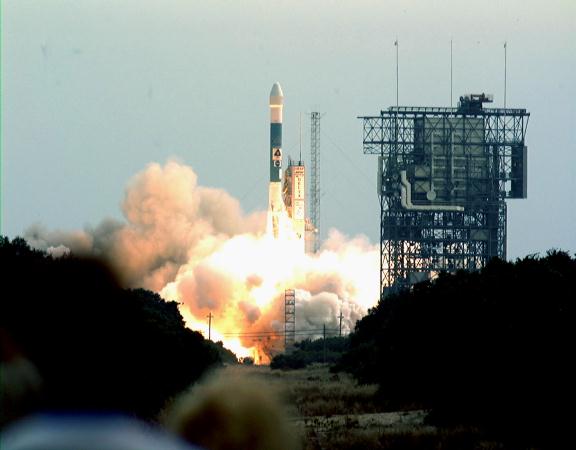By James Barrowman
“It’s the wrong thing to be doing,” I told the Director of Engineering, trying to head off a last-minute change in our X-ray Timing Explorer (XTE) project.
The spacecraft was nearly integrated and had passed some of its early mechanical and electrical testing. One of its instruments, the Proportional Counter Array (PCA), had a gas leak in one of the five proportional counter modules that made up the array. The science division where the instrument was being developed wanted a gas replenishment system added to assure the PCA would last for the entire mission.
Adding a gas replenishment system would mean interrupting spacecraft integration and testing; developing a new subsystem and integrating it onto the spacecraft; modifying all the PCA modules, including a complex integration of the instrument onto the spacecraft; and implementing a more complex performance and environmental test process. It was the wrong answer because it made a simple design more complex and added little value to the mission at a major cost in time and dollars. Our mission couldn’t afford the additional budget and schedule risks.
XTE was the latest of a long line of projects being managed by my Explorer Program Office, but it was unique in being the first project we had agreed to do for a fixed price. NASA HQ agreed, in return, to provide us with the funding profile we needed to make it happen. We were both trying to break the unhealthy spiral in the Explorer program that saw current missions overrunning and pushing subsequent missions downstream to the point where their science was becoming marginal. The science community was upset and wanted better performance from NASA.
I summarized my arguments to the Director. The Engineering Directorate had taken responsibility for the spacecraft development when we established XTE as an in-house project at Goddard Space Flight Center, and also was supporting the PCA development.
“It adds complexity,” I reiterated. “It’s a significant cost impact for only a marginal reliability increase.”
His response was music to my ears, “Jim, I won’t stand in your way, but you’ll have to convince the scientists and engineers.”
Now comes the real work
My next stop was the science division where the instrument in question was being developed. I was anticipating a fight because I knew that the scientists and instrument engineers thought they needed the system in order to assure a longer life for the PCA. There was real disagreement on the benefits of the change and the impacts. Four of the PCA modules were sealed well and leak tests had confirmed they would last beyond two years. Only one module had a problem. None of this was outside the parameters of the project’s basic requirements, and I knew that I was going to need to rely on those requirements if I was going to win this argument.
I had entered the fray, so to speak, because the XTE Project Manager asked me to get involved. I was the Explorers Program Manager, but I worked with my project managers in a way that encouraged them to consider me their deputy. They gave me jobs to do that helped them out. In the process, I created a stronger bond so that they didn’t simply view me as a boss, but as somebody who supported them. The project manager and the spacecraft manager wanted to stay focused on the mission development while I fought the political and technical battles necessary to prevent disrupting progress.
As part of our plan to pull XTE off for a fixed price, we worked closely with the science team to document the mission requirements as part of the project. We struggled together to make the requirements specific, clear, and to the greatest extent possible, quantitative. As a result, the XTE project plan identified performance requirements on all the major mission elements. Two of the requirements bore directly on this situation: The mission had to last two years, and four of the five PCA modules had to be operative for that time period. Of course, the scientists’ goal was for XTE to last much longer than two years and to have all five PCA modules operating as long as possible.
It’s important to note here that we didn’t negotiate our requirements in isolation at the beginning of the project. Our requirements were well thought out and realistic because they were established after we had taken implementation approaches into consideration during initial formulation. First, the scientists laid out broad goals. Eventually, we gained an understanding of the architecture, implementation, and programmatic issues, and we were able to sign realistic requirements.
Sealing the deal
When it was time to remind people about these requirements, I met with the instrument team and laid out the total situation, both technical and programmatic. All the key scientists and managers had signed the XTE project plan, and we supposedly had a firm and broad agreement on our direction and plan. “These are your requirements, guys,” I said. “You signed up for them, and you agreed to them.”
I didn’t have to say it explicitly because it was clear what I was getting at: Where’s your integrity? If you didn’t mean this, why did you sign up for it?
They weren’t happy, but they agreed not to pursue the gas replenishment system. Our mission requirements were being met. The scientists stood by their requirements and confirmed their understanding that we had taken on this mission for a fixed price in response to concerns from the broader science community.
Once that decision was made, my engineers refocused on the question of the leak. The instrument development team redoubled their efforts to seal the fifth PCA module. Eventually, they found a tolerance build-up and fixed it in time to get the module delivered on schedule.
The XTE mission was ready on time and well within budget. It is now on orbit as the Rossi X-ray Timing Explorer (RXTE) mission. RXTE has dramatically improved the understanding of the high-energy phenomena in the universe, discovered black holes at the center of galaxies, and correlated the size of black holes to the size of the galaxies.
Not only did the mission meet its requirements, RXTE is still scientifically productive after seven years in orbit and there has been no degradation of the PCA performance. The time we spent working with the scientists to get the right requirements clearly understood and mutually accepted has reaped a far greater return on investment than we dared to imagine.
Lessons
- Clear, documented requirements help you control the scope of your project and resist unnecessary changes. Have all key parties sign off on the requirements to assure that they understand and are committed to them.
- Get your project requirements right as soon as possible, but not prematurely. To assure they are realistic, requirements should not be finalized until after implementation approaches have been considered.
Question
How do you know you are done defining requirements?








